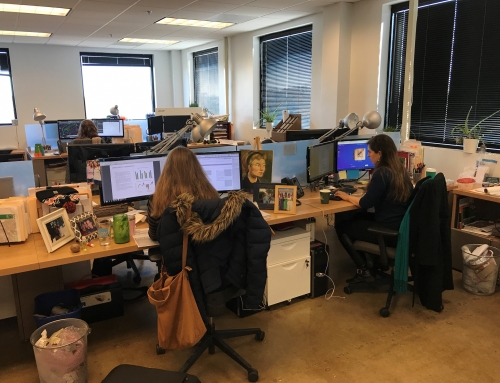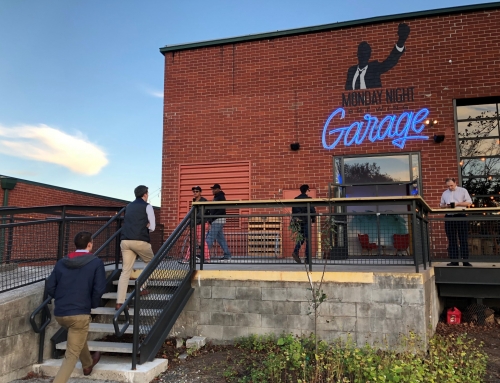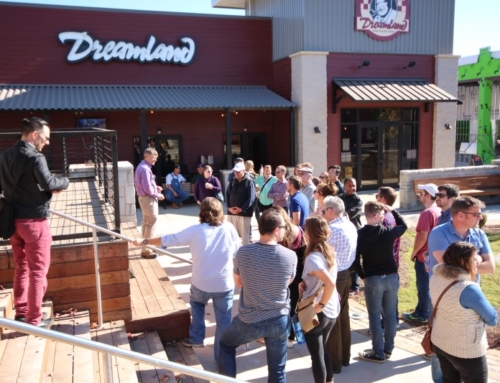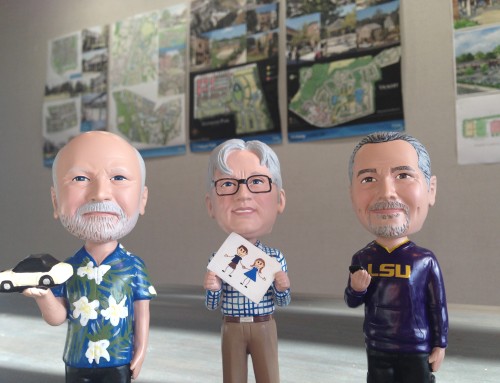TSW-Designed Project Makes Headlines in Hapeville
Asbury Park, a large residential project, designed by TSW on the site adjacent to the former Ford auto plant in Hapeville, GA, has been highlighted in theAtlanta Journal-Constitution as a major step forward for the city.
CITY IN PATH OF A REBOUND?
For Hapeville, hope is building
vBy Kevin Duffy
Atlanta Journal-Constitution, 03/21/08
Bill O’Brien described the fruits of his 18 months of architectural exploration.
“That one sits in the 800 block of Oakdale Avenue, right in the middle of Chicago,” he said. “That second one sits in Georgetown.” Others are straight out of pre-World War I New York and Boston.
O’Brien sounded like he was pointing to pictures in a book, but he was standing outside the retro townhomes in Hapeville built by his company, InterCiti Partners. The former Chicago bond trader traveled to Northern cities and newer communities in Maryland and Virginia, taking some 2,000 photographs and searching for details to help sell his residences —- and, in a larger sense, Hapeville.
The Southside city was rocked in 2006 when Ford Motor Co. closed its plant there, displacing 2,000 workers and torpedoing Hapeville’s tax base.
It wasn’t the first instance when changing times had left Hapeville on the losing end. Construction of I-75 and growth at Hartsfield-Jackson International Airport consumed chunks of the city.
Today, 6,000 people call Hapeville home —- about half what the city’s population was in the 1960s.
InterCiti’s proposed development, the $550 million Asbury Park, would be a big turnaround. Over the next seven years, Asbury Park’s 2,100 proposed homes could boost residency by 80 percent.
The plan is to build condominiums, townhomes and apartments on 33 acres next to the closed Ford site. Oxford Properties, partially owned by John Williams, the Post Properties founder, already has 269 apartments under construction. Separately, Jacoby Development intends to convert the 122-acre Ford site into an office and retail destination.
By 2020, the two complementary projects could create an “aerotropolis,” a city within a city linked to Hartsfield-Jackson.
O’Brien, who moved to Atlanta 18 years ago, is convinced the airport, once a consumer of city property, will be Hapeville’s salvation.
He cited the development that has grown up around other large airports, such as Reagan National outside Washington and O’Hare International in Chicago. Across from Asbury Park, the Maynard Holbrook Jackson Jr. International Terminal is scheduled to open in three years.
“Atlanta is just another Chicago waiting to happen,” O’Brien said.
Based in Cumming, InterCiti was established to develop Asbury Park by investors calling themselves Main Street Partner Group.
The stakeholders in Main Street Partner Group include Neal Golden, a senior vice president with Newmark Knight Frank who used to run the global real estate adviser’s Atlanta operation, and his father, Ray Golden, a retired investment banker.
“How many opportunities are there remaining in Atlanta where collectively you can assemble over 100 usable acres inside 285?” asked Neal Golden, who now works in New York. “It doesn’t exist.”
Asbury Park is Main Street Partner Group’s first big project. The company began buying land three years ago after O’Brien’s son, Michael O’Brien, wandered into Hapeville after checking out College Park.
He saw small, well-kept older homes on wooded lots and a quaint commercial area. At the city offices, he examined the zoning map that laid out Hapeville’s development opportunities close to three interstates and the airport.
“My eyes lit up,” O’Brien said. “I saw the feasibility of different property assemblages.”
He encouraged his father to visit Hapeville, but Bill O’Brien initially wasn’t interested. He had this image of Hapeville being industrial and haggard.
“I did everything in my power to avoid it,” he said.
After relenting, O’Brien also became a believer, and thus began Main Street Partner Group’s acquisition of 119 properties.
At the time, Ford was still operating its plant and the Jacoby project was not even on the horizon.
After the automaker said it would close shop in October 2006, InterCiti added 920 homes to its plans, knowing intense development was likely to occur next door.
Jim Jacoby, the developer who started Atlantic Station, the massive mixed-use project in Midtown, announced this month that he wants to build offices, shops, restaurants, warehouses and possibly a conference center at the Ford site —- but no homes.
The numbers are bound to change in the coming years, but Jacoby’s current proposal calls for 3.6 million square feet of office and retail space.
“With the Jacoby project, I don’t have to worry about the retail coming,” O’Brien said.
Future Asbury Park residents might work at the airport or Jacoby’s project, or they might commute to intown jobs.
The airport area already has a sizable work force. An estimated 55,000 work at Hartsfield-Jackson. Another big employer is the Wachovia bank operations center, across the street from Asbury Park’s first townhomes.
The name Asbury Park was Neal Golden’s idea. The intent was not to bring to mind Bruce Springsteen, who performed in Asbury Park, N.J. —- although “the Springsteen connotation doesn’t hurt,” Golden said.
Instead, the name represents “the old becoming new,” he said, like what happened years ago in the Virginia-Highland and Vinings neighborhoods.
TSW-Designed Project Makes Headlines in Hapeville






